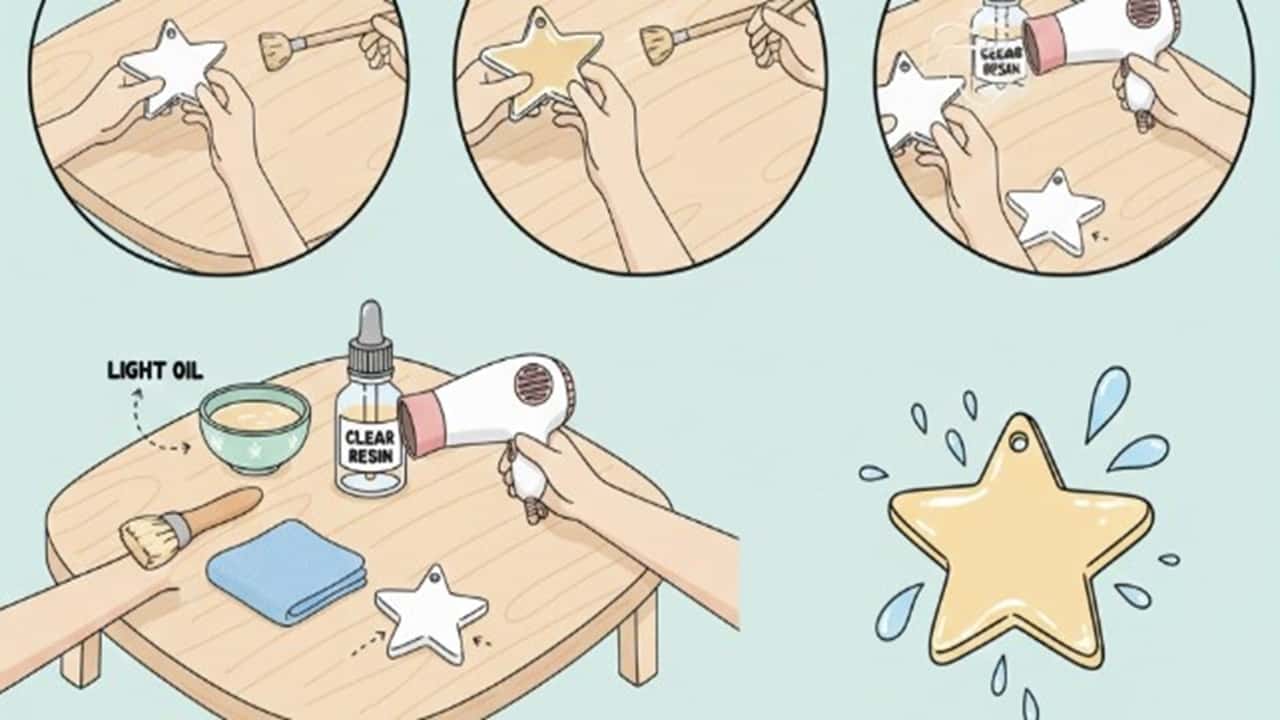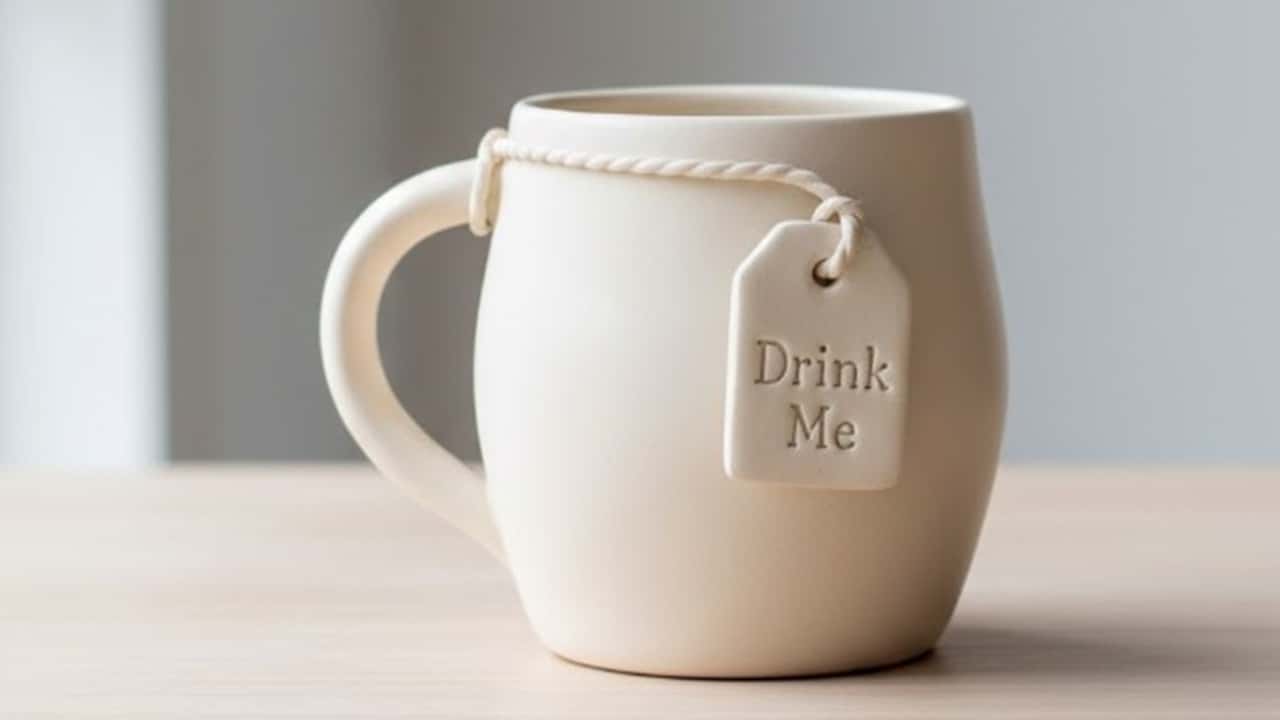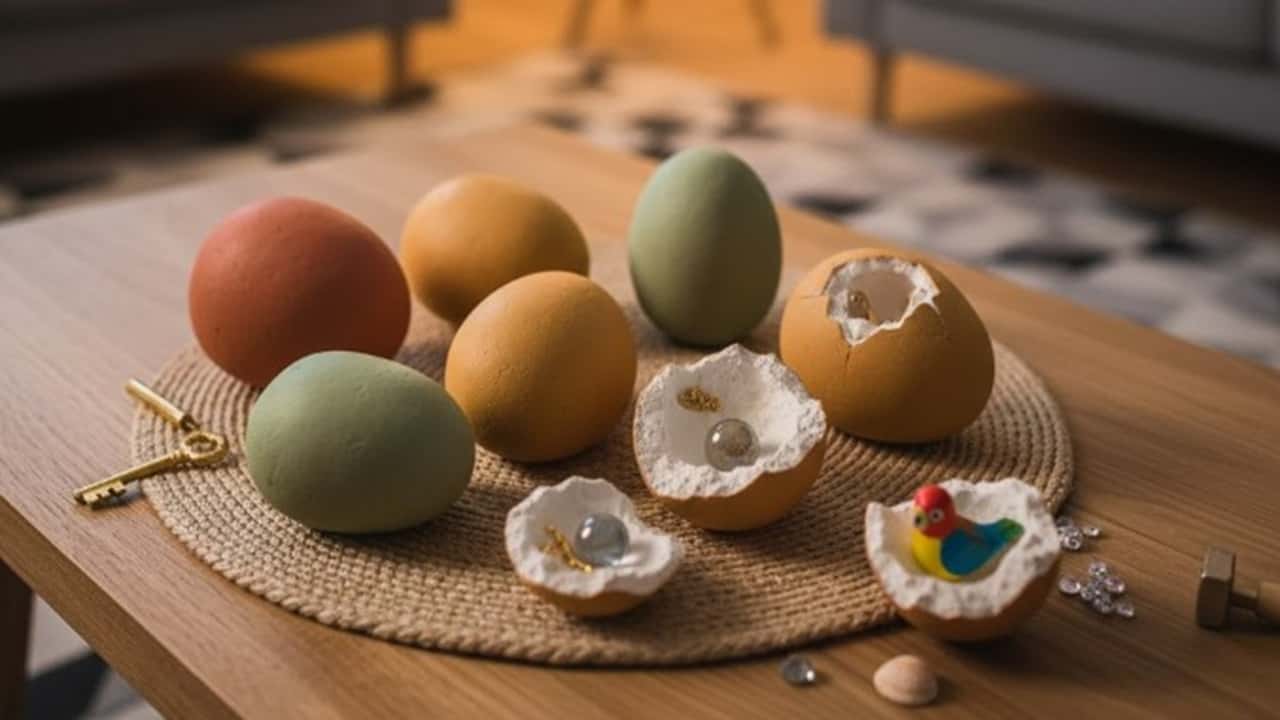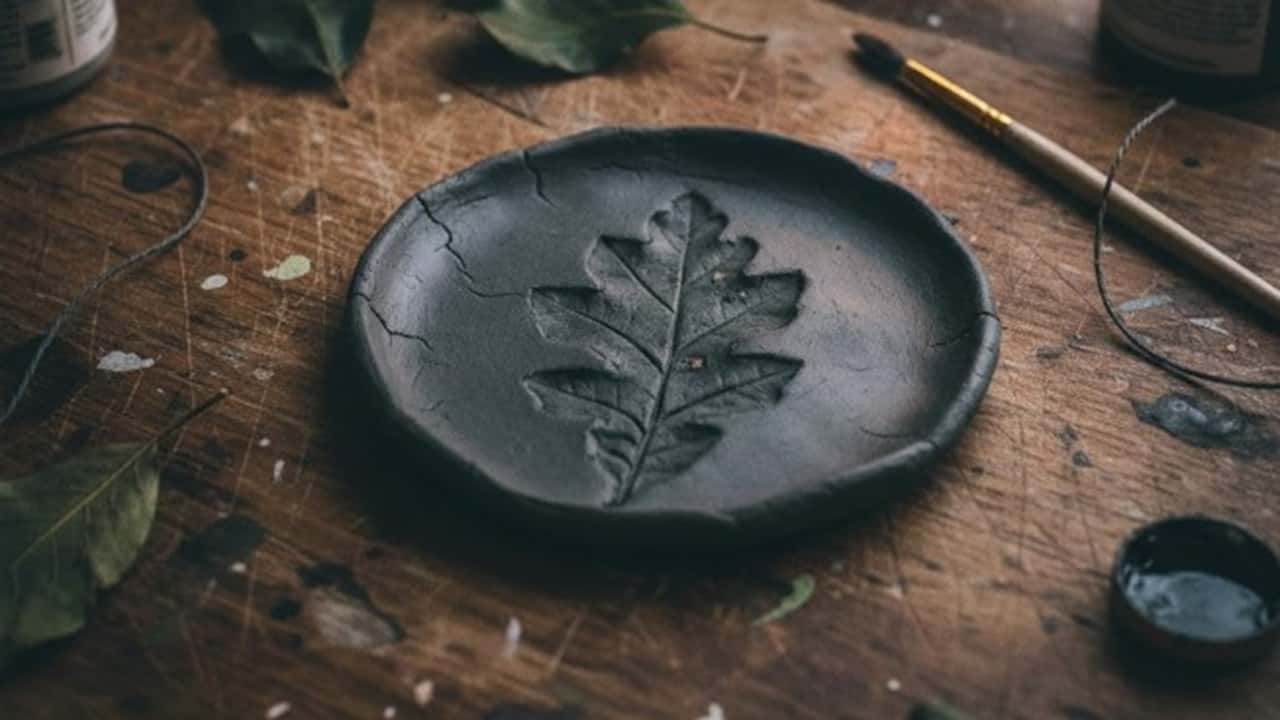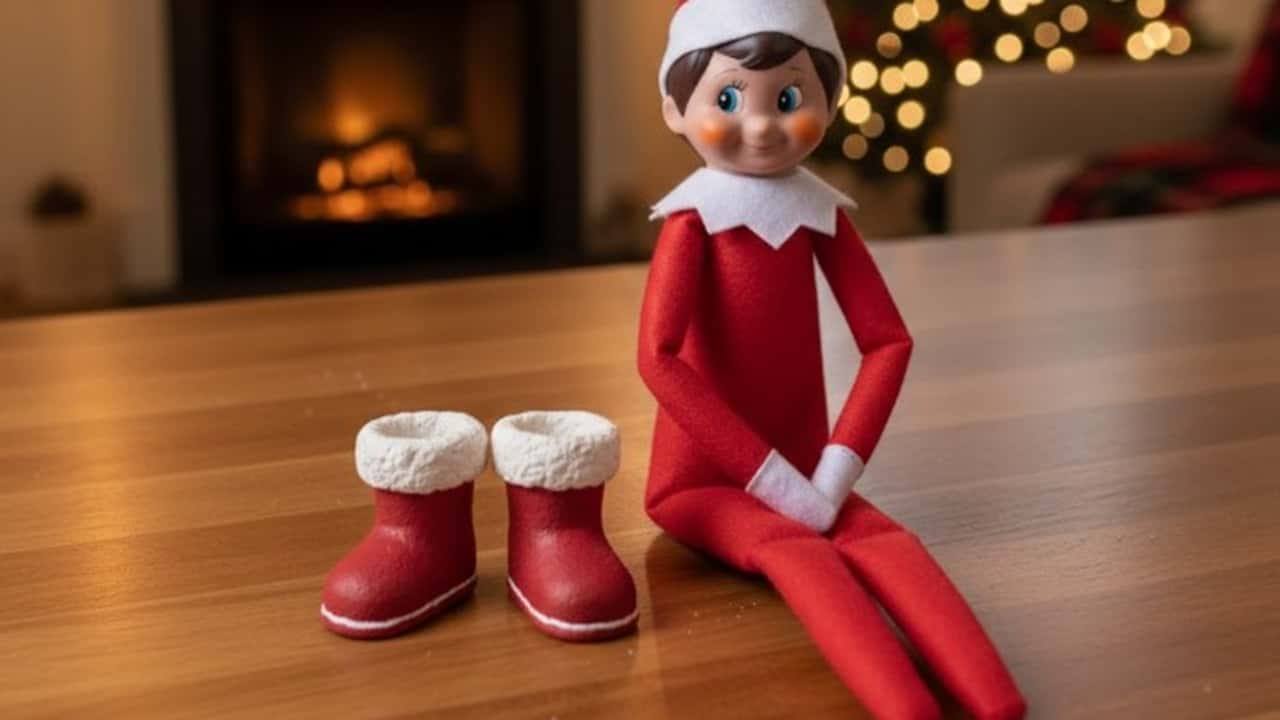Planning a birthday party for teenagers isn’t easy. They’re past the age of simple games but not quite ready for adult gatherings.
I have collated 13 unique Birthday Scavenger Hunt Ideas for teens that offer a perfect middle ground – challenging enough to keep them engaged, fun enough to create memories.
I’ve watched countless teens light up when they’re given missions that respect their intelligence while still tapping into their competitive spirit.
1. The Netflix Clue Trail

Turn their binge-watching habit into your biggest advantage here.
Create clues based entirely on popular shows they’ve been streaming – each riddle references a scene, character, or quote that leads to the next location.
The birthday teen’s room might hold a clue about Stranger Things that points them to the basement (the “Upside Down”).
Your kitchen becomes Central Perk from Friends. What makes this work is the specificity – you’re not just dropping generic references but weaving a narrative that mirrors actual plot twists from their favorite series.
Hide the final prize inside a laptop case or streaming device box. They’ll appreciate how you paid attention to what they actually watch.
2. The Reverse Time Capsule Hunt

Most scavenger hunts move forward, but this one rewinds. You’ll hide clues that take them backward through their own life – each station represents a different age.
Station one: their current obsession (maybe K-pop posters or gaming setup). Station two: middle school interests.
Station three: elementary memories. At each stop, they collect an item that represents that era, and the final destination reveals a video montage you’ve secretly compiled of them growing up. It’s sentimental without being sappy.
The hunt structure keeps them moving while the emotional payoff hits at the end. I love this because it works for any teen personality type.
3. The Social Media Simulation Quest

They live on their phones anyway – make it part of the game.
Each clue comes as a mock “post” from different platforms: an Instagram story-style clue, a TikTok challenge description, a Twitter thread that’s actually coordinates, a Snapchat-style disappearing message (use disappearing ink).
The genius here is format familiarity. They decode faster because they’re fluent in this language. One clue might be a “finsta caption” that only their close friends would understand.
Another could be a YouTube thumbnail sketch that hints at the backyard shed. The final treasure? A ring light or phone tripod – something that feeds back into their digital world.
4. The Music Festival Circuit
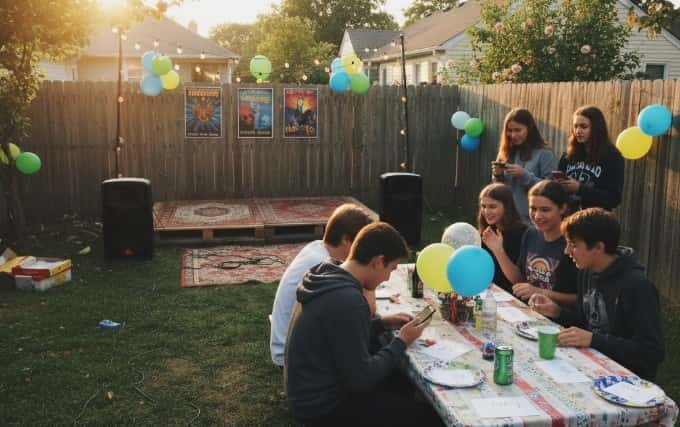
Transform your property into different “festival stages.” Each location represents a genre or artist the birthday teen loves – the garage becomes “Coachella,” the backyard is “Lollapalooza,” the living room is “Warped Tour.”
At each stage, they find a clue hidden near items that represent that music scene: vinyl records, concert tickets, band posters.
The clue itself might be written in song lyrics they need to decode.
What separates this from basic treasure hunting is theming each space with actual decorations – LED strips, speaker setups, even specific playlists playing.
The final prize could be actual concert tickets or a vinyl from their favorite artist. You’re creating an experience, not just a hunt.
5. The Escape Room Hybrid
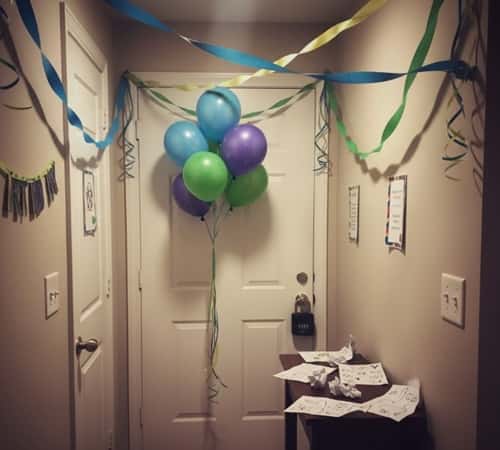
Forget linear clue-to-clue progression. Lock them in sections of your house where they must solve puzzles to “escape” and access the next zone.
The bathroom door gets a combination lock (code hidden in a previous clue). Your basement needs a key they’ll find by solving a riddle.
Each room contains birthday-themed obstacles – maybe they need to arrange cupcakes in a specific pattern to reveal numbers, or decode a message written on balloons.
Time pressure amplifies everything. Set a countdown timer and suddenly average teens become frantic puzzle-solvers. The complexity level can scale based on your group’s experience with escape rooms.
6. The Thrift Store Challenge Hunt
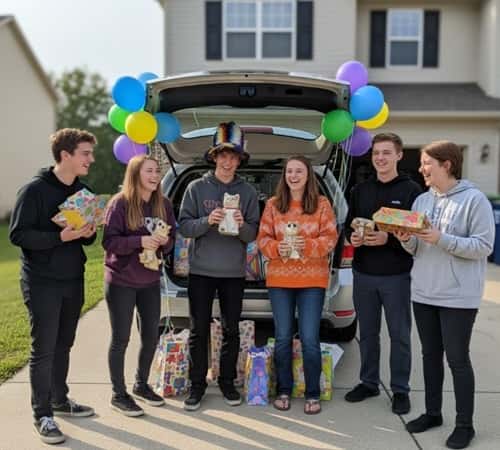
Give each team twenty dollars and a list of bizarre items they must find at local thrift stores – but here’s the twist: the items are clues in disguise. “Find a book published in 1985” actually tells them to go to house number 1985 on a specific street where you’ve planted the next clue with a neighbor’s permission.
“Buy the ugliest lamp” translates to checking the lamp section of your garage.
This gets them out of the house, adds a shopping element teens actually enjoy, and the absurd items they return with become party decorations.
Just make sure you’ve coordinated with local shops beforehand. The movement and mission create natural energy that indoor hunts sometimes lack.
7. The Murder Mystery Integration
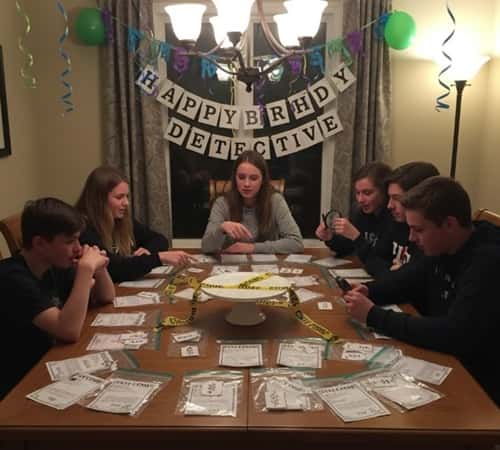
Someone “stole” the birthday cake, and they need to find the culprit through scattered evidence. Each clue reveals a different suspect’s alibi or whereabouts during the “crime.”
The living room has a witness statement. The kitchen contains forensic evidence (maybe frosting “fingerprints”).
The garage holds security footage (actually just a note describing what the camera would have seen).
Teens love this because it adds narrative weight to the hunt—they’re not just finding random objects but piecing together a story.
The final reveal can implicate the birthday teen’s best friend, who then “returns” the cake with candles ready. Character cards for each suspect add production value that feels professional.
8. The Coordinates and Maps Adventure

Every clue is a GPS coordinate or hand-drawn map fragment.
Start with your neighborhood—one coordinate leads to a park bench where the next clue waits under tape.
Another points to a specific tree. A map fragment shows your property divided into quadrants with X marking spots.
This works brilliantly because it combines old-school treasure map aesthetics with modern technology.
Some teens will use their phones for precision; others will navigate by landmarks. Include both indoor and outdoor coordinates to vary the terrain.
The final coordinate brings everyone back to a fire pit or patio where the birthday celebration actually begins with s’mores or pizza.
9. The Food Trail Hunt

Each clue location is associated with a specific snack or ingredient.
The fridge holds a clue inside a pizza box. The pantry has one tucked in a cereal container.
The grill outside contains instructions hidden under the cover.
But here’s what makes it better: at each station, they must actually eat or prepare that food item before receiving the next clue.
Make tacos at station three to reveal the clue written inside the shell.
Blend a smoothie at station five – the recipe proportions are actually coordinates.
This builds in natural breaks, keeps energy high with food, and creates interactive moments beyond just reading paper clues. The final destination? A full birthday dinner or dessert bar you’ve prepared.
10. The Photo Recreation Challenge

Instead of written clues, they receive old photos taken at specific locations – maybe family vacation spots, previous birthday parties, or random corners of your house from five years ago.
Their job is to figure out where each photo was taken, go there, and recreate the shot exactly.
This becomes surprisingly difficult because angles matter, objects move, and memories fade.
Once they successfully match the photo, they find the next one taped underneath that location.
The progression creates a visual story of their life, and the recreated photos become instant party decorations or a slideshow for later. Plus, the comparison shots are genuinely funny when you see how much has changed.
11. The Color-Coded Mystery

Assign each clue a color, and that color corresponds to where they’ll find the next piece.
Red clues hide near anything red in your house – the couch cushions, a stop sign visible from the window, tomato sauce in the pantry.
Blue leads them to the pool, the bathroom, their denim jacket. This sounds simple but becomes strategic when you introduce fake clues in wrong colors that lead nowhere.
They need to track which color sequence is legitimate while ignoring decoys.
Teens appreciate the pattern recognition challenge, and you can adjust difficulty by how obvious you make the color connections.
Use colored envelopes or papers so the system stays clear even when they’re holding multiple clues.
12. The Decades Timeline Journey
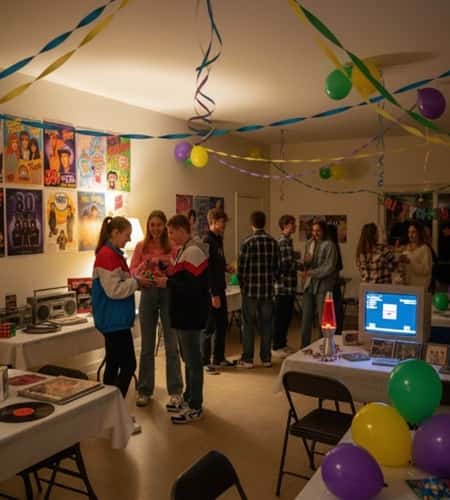
Each clue station represents a different decade and requires them to complete a challenge or answer trivia from that era.
The ’80s station in your living room has them solve a Rubik’s cube to reveal the next location.
The ’90s corner requires naming all members of a boy band. The 2000s setup involves MySpace-era internet references.
Your basement becomes the 2010s with Fortnite or musical.ly challenges. This educates while entertaining – they’ll actually learn stuff about eras they weren’t alive for while competitive trivia keeps them invested.
Decorate each station with decade-appropriate items borrowed from your own teenage years. The nostalgia works both ways.
13. The Augmented Reality Trail
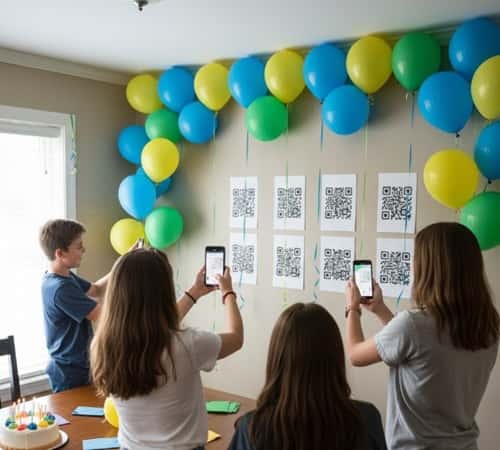
Use free QR code generators to create a modern twist.
Print QR codes and hide them around your property – each one links to a video clue, a locked Google Doc with passwords hidden elsewhere, or a photo that zooms in on the next location.
One QR code might lead to a YouTube video you’ve unlisted where you’re acting out the next clue dramatically.
Another opens a Spotify playlist where the song titles spell out instructions. This leverages technology teens already use constantly but in unexpected ways.
The mix of digital and physical creates a hybrid hunt that feels current without being gimmicky.
Your final QR code can link to a digital photo album of the entire party or a birthday message video from friends who couldn’t attend.
Final Thoughts
The difference between a scavenger hunt that flops and one that becomes legendary isn’t complexity – it’s personalization.
I’ve realized through watching different friend groups that what matters most is showing you understand what actually excites your teen.
A tech-obsessed kid will love QR codes; a nostalgic one craves the photo recreation challenge. Don’t overthink the execution.
Your handwritten clues on index cards will mean more than anything professionally printed because they came from you.
The magic happens when teens forget they’re at a “planned activity” and just start genuinely competing, laughing, and collaborating. That’s when you know you’ve created something worth remembering.
